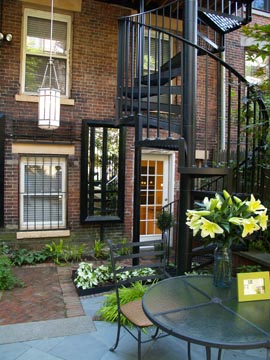Bummer news. Five weeks after my initial call for small-retreat submissions, The Taunton Press had an unexpected and unfortunate change of heart. They’ve since given me a release and “kill fee.” It’s a bit of a blur, but from what I understand, they’re scaling back.
I was surprised by their decision, considering that there’s been great buzz and enthusiasm for the project on numerous other fronts. I greatly appreciate the web editors, writers, colleagues, friends, family, and House Enthusiasts who happily spread the word about my search for suitable projects to include in the book. Thanks in large part to their efforts, I’ve received dozens of top-notch submissions in the form of studios, guest houses, woodland and waterfront escapes, summerhouses, and quirky novelty structures.
I also want to thank the architects, designers, landscape designers, gardeners, and homeowners who embraced the book concept and generously shared their projects with me. I remain hopeful that another publisher will recognize the project’s potential. I think that many readers, in these trying times, can appreciate the appeal of creating small retreats of their own, in their backyards or beyond, where they can slow down, regroup, and refresh their lives. They simply need design inspiration. The imaginative retreats that I’ve collected over the past weeks beautifully exhibit the design characteristics that I aspire to share, so readers can create their own authentic, small retreats.
While I shop the project around to other publishers, I will continue to seek submissions. So if you have a project to suggest, please email me (Katie@katiehutchison.com). Check back with this category for updates. Together we can still shape an inspiring and informative book. We simply need the right publisher.
 Training trees to grow in one plane, as an espalier, appeals to me. I am likewise enamored of topiaries. I was married in a topiary garden, and I periodically bring home a miniature, potted myrtle or rosemary topiary that I simply can’t resist. The art of shaping natural material to achieve a desired form is, in many ways, akin to architecture. This espaliered dwarf pear tree beautifully enhances the pale, blue-green backdrop of what I assume is an infilled, barn-door opening. It’s but one of many captivating garden features that I discovered at a Gloucester property last weekend during the North Shore Open Day, a program organized by The Garden Conservancy. Visit their website to find the Open Days Program schedule in your neck of the woods. I was glad I did.
Training trees to grow in one plane, as an espalier, appeals to me. I am likewise enamored of topiaries. I was married in a topiary garden, and I periodically bring home a miniature, potted myrtle or rosemary topiary that I simply can’t resist. The art of shaping natural material to achieve a desired form is, in many ways, akin to architecture. This espaliered dwarf pear tree beautifully enhances the pale, blue-green backdrop of what I assume is an infilled, barn-door opening. It’s but one of many captivating garden features that I discovered at a Gloucester property last weekend during the North Shore Open Day, a program organized by The Garden Conservancy. Visit their website to find the Open Days Program schedule in your neck of the woods. I was glad I did. 


